
Classic cocktails make up an average of 40% of cocktail sales in the UK’s best bars, so which ones are served most? That was the question we posed to bartenders and bar owners of Class Bar Awards-nominated bars for The CLASS Report 2024.
Here Clinton Cawood runs the rule over the most enduring mixes in this countdown from the 30th to the most popular.
30 Mezcal Margarita
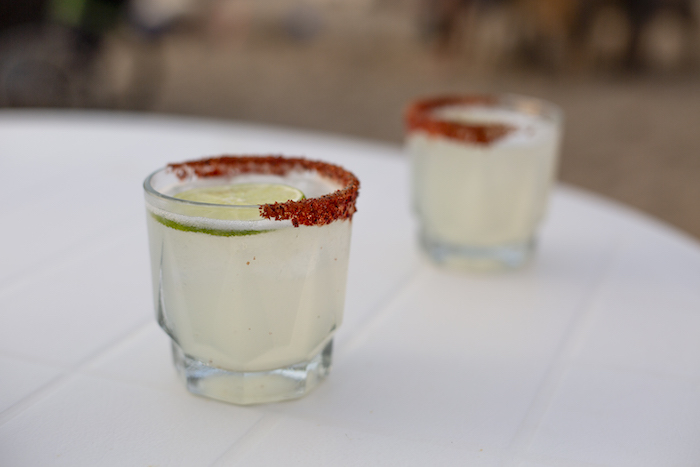
It’s not the greatest conceptual leap to replace the tequila in a Margarita with its fellow agave spirit mezcal, and we’ll probably never know who was the first to make the swap, but we nevertheless owe them a debt of gratitude, whoever they are. Playing on mezcal’s often-smoky characteristics, the result tends to be punchier and more complex than the original – and with the inexorable rise of mezcal at the moment, it’s becoming ever more prevalent. Some elect to retain the triple sec of the original Margarita, while others opt for the more modern Tommy’s approach, simply combining mezcal, lime juice and agave syrup.
29 Gimlet
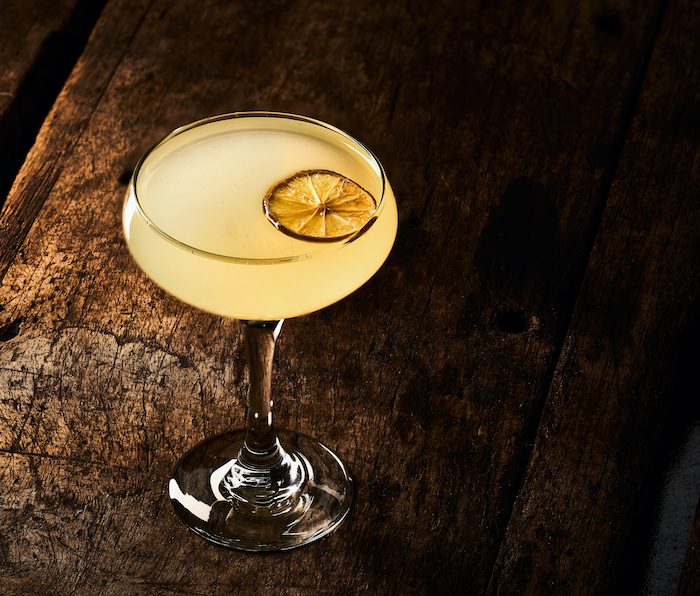
Born out of necessity – that being scurvy prevention – this deceptively simple combination of gin and lime cordial has survived relatively intact since the late 1800s. Whether named for the Royal Navy’s Sir Thomas Desmond Gimlette or the sharp tool used to tap barrels on ships, the Gimlet is inextricably linked with Rose’s Lime Juice Cordial. The first-ever fruit concentrate, it was patented in 1867, the same year that the Navy began requiring ships to carry lime or lemon juice. Many modern takes have moved on from Rose’s, with other cordials or fresh juice taking its place, but the spirit of the drink remains.
28 Manhattan

Not only the most famous cocktail to be named after a New York borough, the Manhattan also has some of the most colourful origin stories of the classics. One unlikely tale involves Winston Churchill’s mother, another attributes the drink’s creation in the 1860s to a man named Black, who ran a bar on Broadway. Regardless of who invented it, we’re fortunate to still have this transcendent combination of whiskey, sweet vermouth and bitters today, along with some of its more capable evolutions, such as the Rob Roy, or more recent Black Manhattan by US bartender Todd Smith.
27 Singapore Sling
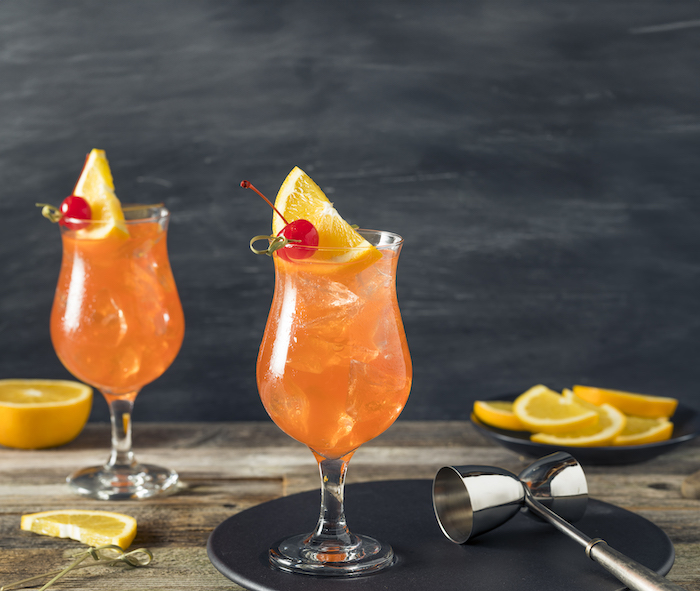
Say what you like about the Singapore Sling, but unlike most other classics its age, we’re at least pretty sure of its origins. The location, famously, was the Long Bar at the Raffles Hotel in Singapore, and the bartender behind it, in 1915 according to the hotel, was Ngiam Tong Boon. More than a century later it’s having a resurgence, with Raffles having opened a site in London. Today, a Singapore Sling at the Long Bar is a rite of passage for even the most casual of cocktail-curious tourists to the city, but there are plenty of other places there in which to sample its national drink.
26 Sazerac

Often thought, probably erroneously, to be the very first cocktail, the Sazerac is nevertheless a fine historical artefact, and a damn good drink too. Some classics change, but the Sazerac has remained firm since its origin in the mid-1800s. Its birthplace, legend has it, was the Exchange Coffee House in New Orleans, later renamed the Sazerac Coffee House. Here, Sazerac de Forge et Fils cognac is said to have met the new Peychaud’s bitters, with absinthe joining the party soon after. Phylloxera caused rye to replace cognac for a time, although it’s not uncommon to see both used together nowadays. The Sazerac was trademarked by Sazerac Co in 1900.
25 Vodka Martini
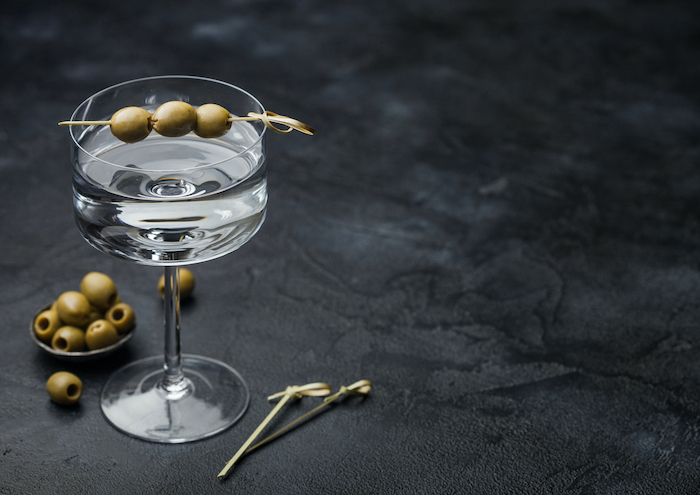
Spare a thought for the Vodka Martini, Vodkatini, Kangaroo… whichever you prefer. A drink whose fortunes have always been at the whim of passing fads, perhaps more than most. No doubt benefiting from vodka’s ascendance in the 1950s, and fuelled by a certain spy who loved them, its popularity peaked for a few decades, edged out in later years by a slew of colourful, fruity Tinis. As we collectively came to our senses, the Gin Martini made its rightful return, leaving the Vodka Martini somewhat out in the cold. Regardless, this vodka and vermouth mix is definitely back, at least for the moment.
24 Bramble

The Espresso Martini might be the best-known creation of the legendary, late Dick Bradsell, but there are other masterpieces in his oeuvre. Among these is the Bramble, created while Bradsell was working at Soho members’ club Fred’s in the 1980s. Setting out to make a distinctly British drink, and working with the Sour as the cocktail’s basic structure, he deftly combined gin, lemon juice and sugar syrup in a glass with crushed ice, finishing the drink off with some blackberry liqueur, crème de mûre – creating a timeless classic distinguished not only by its simplicity and balance, but by its eye-catching appearance too.
23 Whiskey Sour
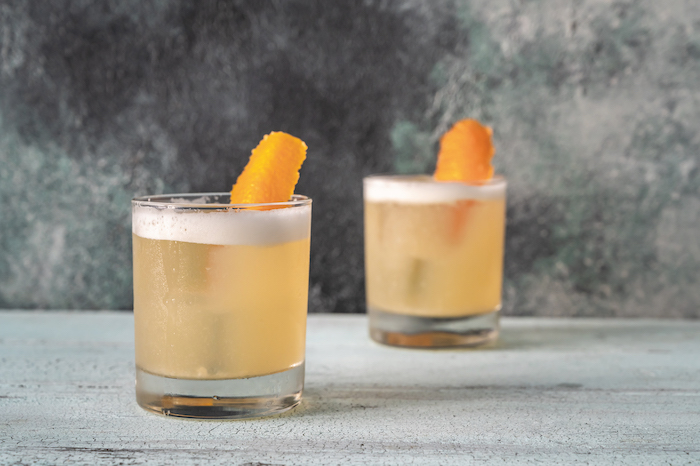
As a category of cocktail, the Sour is a venerable one, and its whiskey-based incarnation is historically the most prevailing. Countless citrus-and-spirit classics have followed, but the Whiskey Sour stands relatively unchanged, aside from a few details. The egg white that’s near-essential nowadays wasn’t always so, for example, but the core elements of whiskey, sugar and lemon juice come to us directly from the mid-1800s. The earliest written references to the Whisky Sour date back to around 1870, following the first mentions of the Sour in the 1850s.
22 Mojito
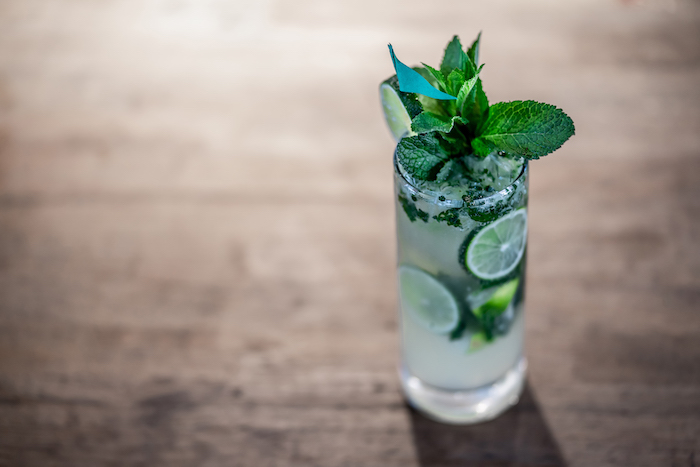
With a cast that includes everyone from Sir Francis Drake to Ernest Hemingway, the Mojito has a long and colourful history. We’ll probably never know whether the 16th-century English seafarer said to have given the drink its former name, the Drake or Draque, was actually involved in its creation. Or whether, instead, the drink originally hails from Havana’s Bodeguita del Medio, where Hemingway is said to have enjoyed his fair share of them. We do know that only a few years ago it was so popular as to become the bane of bartenders’ lives, although that’s begun to wane more recently.
21 Cosmopolitan

For a universally-recognised classic with only a few decades of history, you’d think that we would have a good idea of where this brightly-coloured combo of vodka, cranberry, triple sec and lime came from, but there are competing stories. The earliest claim comes from Neal Murray, a Minnesota bartender said to have mixed the first in 1975, while Toby Cecchini says he invented the iconic pink drink in New York in 1988. Miami bartender Cheryl Cook is another contender, said to have created it in 1989. Whoever was originally responsible, Sex and the City made it so that the Cosmo won’t be forgotten in a hurry.
20 Penicillin
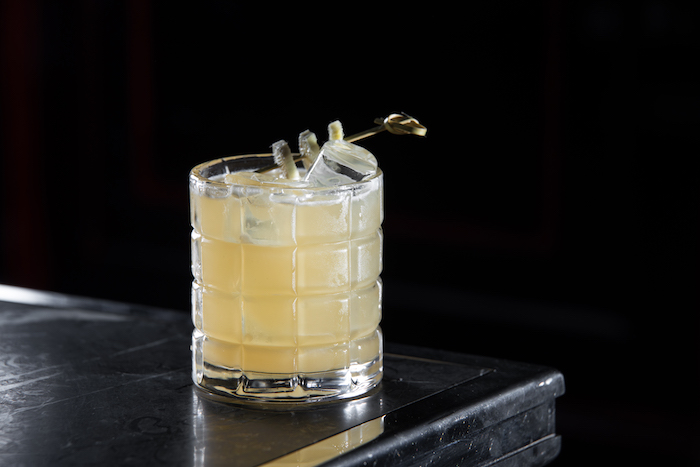
Born in the mid-2000s, this whippersnapper of a modern classic effortlessly rubs shoulders on this list with drinks dating back to the mid-1800s. It’s earned its place with a timeless combination of scotch whisky, lemon juice and sugar, the latter taking the form of a ginger and honey syrup. The final flourish by the drink’s creator, Sam Ross, is a float of peaty Islay single malt, adding a smoky, almost-medicinal element to the cocktail’s aroma.
While this is quite clearly a Whiskey Sour riff, Ross, who was working at New York’s Milk & Honey at the time, based his creation on one of that bar’s well-known cocktails, the Gold Rush. Itself a Sour twist, the Gold Rush combined bourbon with lemon and honey.
19 Bloody Mary
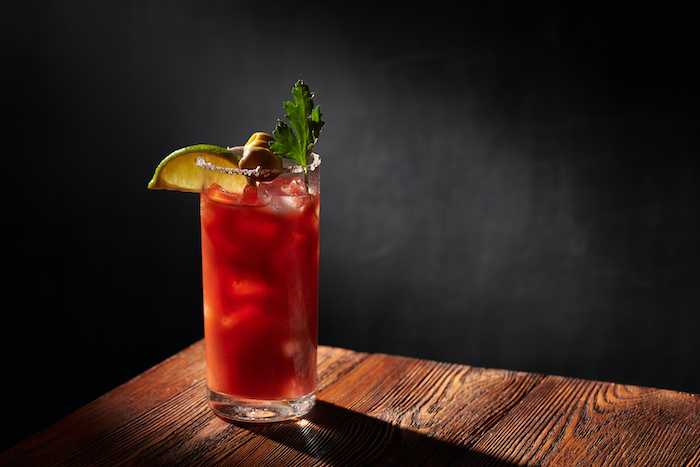
Universal hangover remedy and acceptable morning drink, the Bloody Mary comes in almost as many shapes and forms as there are people making it. This savoury cocktail’s history includes a name change, to the Red Snapper and back, and a move from vodka to gin, and back to vodka. Among its potential inventors, bartender Fernand ‘Pete’ Petiot is in the lead, said to have created it in the 1920s at Harry’s New York Bar in Paris. He took it with him to The Savoy in London and New York’s St Regis Hotel, setting it up to eventually conquer brunch menus everywhere.
18 Pisco Sour

While Chile and Peru both lay claim to pisco as their national spirit, the latter is almost certainly the birthplace of this South American brandy’s most widely-known cocktail. The drink is most commonly attributed to American bartender Victor Vaughen Morris, who arrived in Peru in 1903. Somewhere between that date and 1916, when he opened Morris’ Bar in the capital of Lima, he’s said to have invented the drink that would put his establishment on the map. There are competing stories but, regardless, it’s the Peruvian version that endures, combining pisco with lime, sugar and egg white, garnished with bitters.
17 Mai Tai
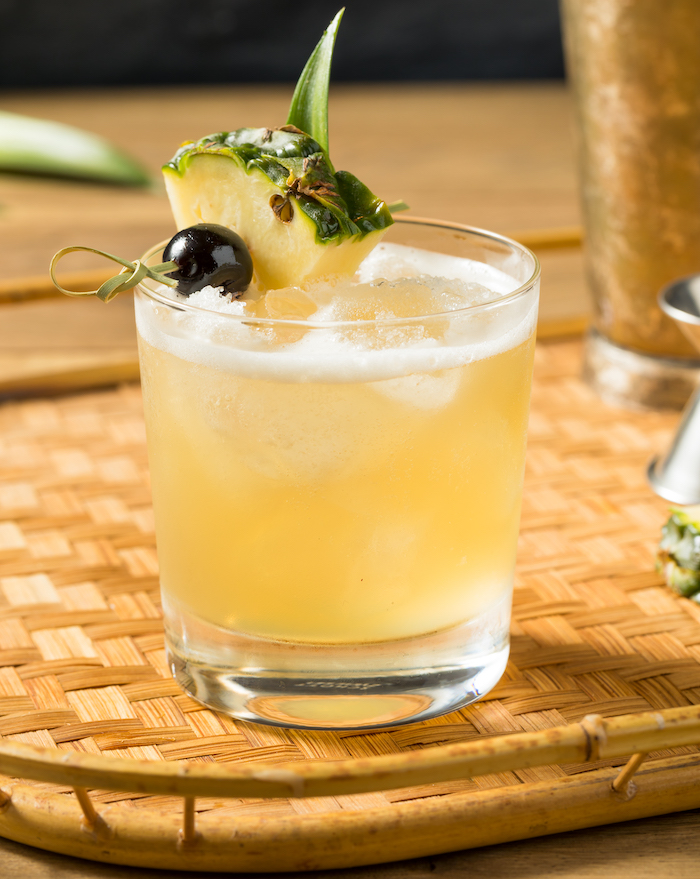
Firmly among those cocktails that are transcendent when made properly, but have been much abused over the years, the Mai Tai is the most legendary of tiki classics. Victor Jules Bergeron – Trader Vic – claimed to have invented it in 1944, although he’s not the only one. His account – in which he combined J Wray & Nephew rum, lime juice, curaçao, orgeat and rock candy syrup in his bar in Oakland – also offers the best story regarding the drink’s name. Giving this new creation to a pair of friends visiting from Tahiti that night, one exclaimed “mai tai-roa aé”, meaning, in Tahitian: “Out of this world – the best.”
16 Clover Club
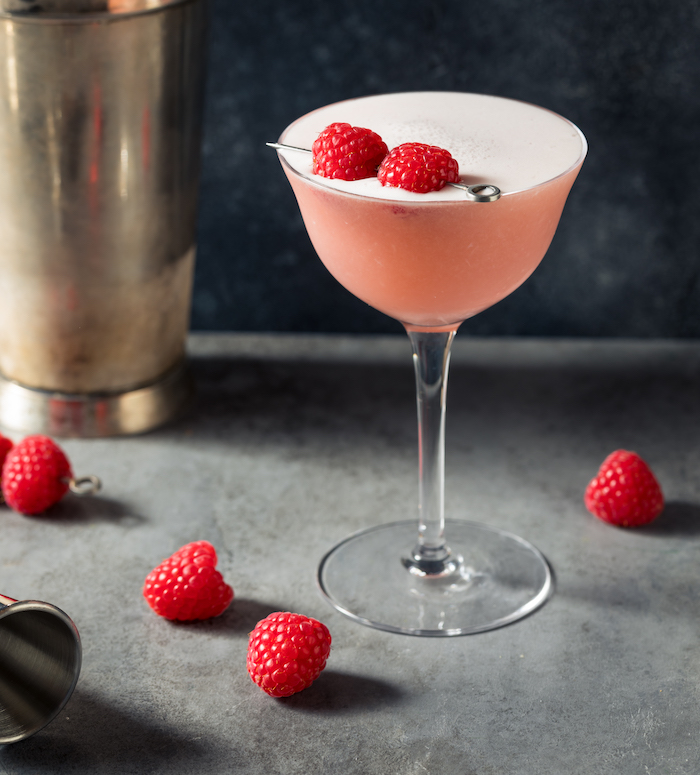
Like the group of businessmen who would meet at Philadelphia’s Bellevue-Stratford Hotel in the early 1900s, whose club gave this classic its name, the Clover Club had something of a fleeting heyday. This delightful blend of gin, vermouth, lemon juice, raspberry syrup and egg white went from pre-Prohibition acclaim to outright mockery in just a few decades. Unlike the original club, the drink has thankfully made a comeback, and deservedly so. This is a beautifully structured cocktail, simultaneously light and indulgent, bright and silky, with balanced complexity from its various components, not to mention its wonderful pink hue which is, like, so in right now.
15 Naked & Famous
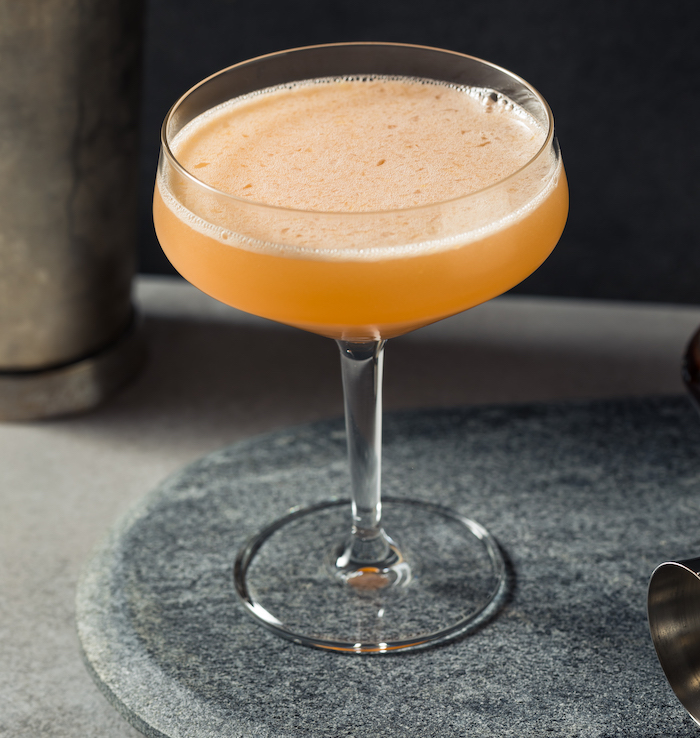
The Naked & Famous is still enjoying its share of the limelight when it comes to cocktail favourites. Its creator, Joaquín Simó, describes it as “the bastard love child born out of an illicit Oaxacan love affair” between that venerable classic the Last Word and the more contemporary Paper Planes cocktail, resulting in a combination of mezcal, Yellow Chartreuse, Aperol and lime juice. The Naked & Famous has lived up to its name, or at least half of it, in the brief time since he mixed the first one in 2011, appearing on menus far and wide.
14 Irish Coffee
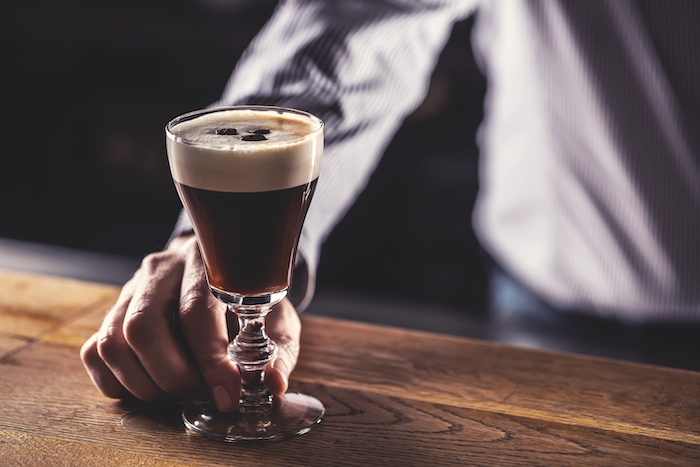
For those that do it well – think Dead Rabbit in New York, Swift and Homeboy in London – the Irish Coffee is approached forensically, with temperature and viscosity honed to perfection. The drink is thought to have been created by Joe Sheridan, the head chef of Foynes flying boat terminal, Ireland, but as Swift’s co-founder Bobby Hiddleston once said, you have to have the Irish Coffee sweet but not too sweet, hot but not too hot, strong but not too strong, and use hand-whipped cream for a silky texture.
13 Zombie

Unlike its namesake, the Corpse Reviver No.2 which doesn't show on this list, the Zombie continues to show signs of life. Its spot on this list suggests it’s more than just a Halloween favourite, and also that the moderation trend hasn’t infiltrated every drinking occasion just yet. This famously boozy tiki favourite, created by Donn Beach in the 1930s, combines a staggering amount of rum with a varying mix of falernum, fruit juices and more – the original recipe was a secret, after all. Few modern takes are as lethal as the original, limited to two per customer at Don the Beachcomber, where they were first served.
12 Dark ’n Stormy
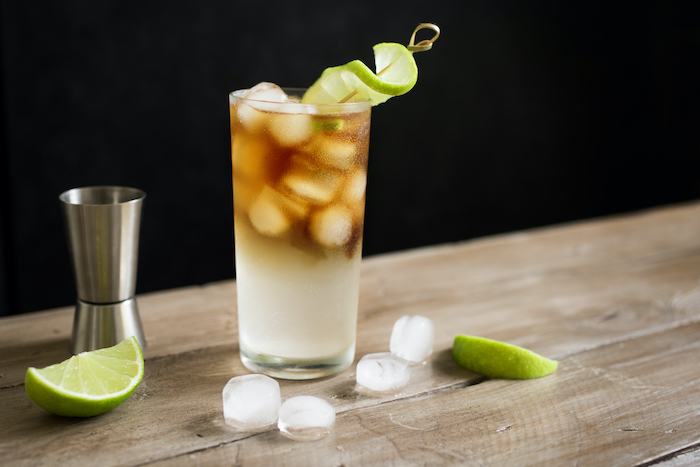
With the dubious honour of being the highest-ranked trademarked cocktail on this list, the Dark ’n Stormy has undoubtedly weathered the test of time. Unsurprisingly, there’s no neat origin story for when rum was first mixed with ginger beer, but it’s likely that this inspired combination, well-established in Bermuda in the 1800s, received a boost from Prohibition. The same Americans who would take rum-fuelled holidays to nearby islands during those years continued to mix these ingredients after repeal. Cut to the 1970s, and Bermudan rum Goslings trademarked the name, although that hasn’t stopped other rums from being mixed with ginger beer, of course.
11. Piña Colada
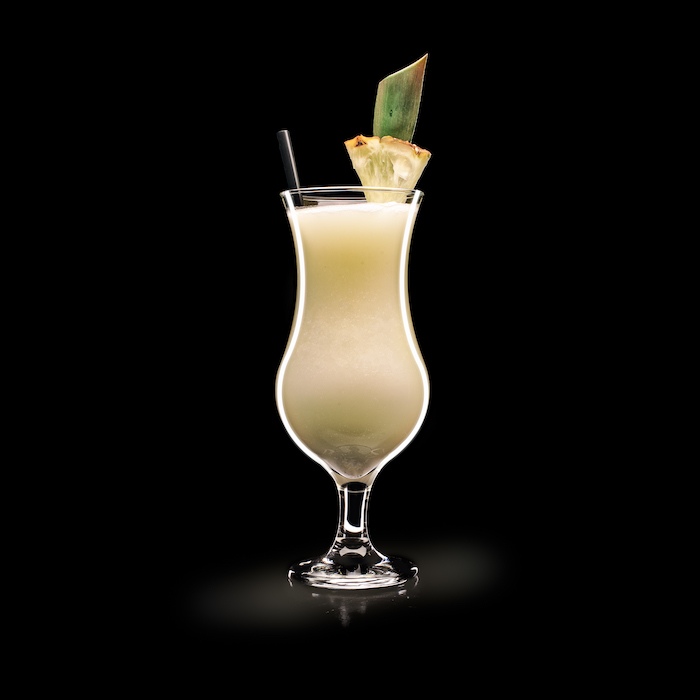
While its distant origins likely lie in Cuba with a drink that combined rum and pineapple with sugar and lime, the indulgent coconut-cream cocktail we know and love is almost certainly a Puerto Rican invention. Far less certain is which of three contenders is actually responsible – either Ramón Pérez, at San Juan’s Caribe Hilton Hotel’s Beachcomber Bar in 1952, his colleague Ricardo Garcia, or Ramón Mingot in 1963, while bartender at Barrachina in Old San Juan. Regardless of who first mixed these ingredients together, the Piña Colada has made a rather triumphant return in recent years, and has spawned some rather excellent modern takes too.
10 Amaretto Sour

If there’s one cocktail that has only become better with age, it’s the mass-appeal Amaretto Sour. When it was making its first appearances, likely around the year 1974, it was little more than a combination of amaretto and lemon juice, the latter quickly turning into sour mix – thanks very much, ’80s bartending. That original formulation has evolved and improved since then, taking cues from the far more established Whiskey Sour. Portland bartender Jeffrey Morgenthaler has done much to bring honour to the Amaretto Sour with his version from around 2012, combining the liqueur with cask-strength bourbon, lemon juice, sugar syrup and egg white.
9 Aperol Spritz
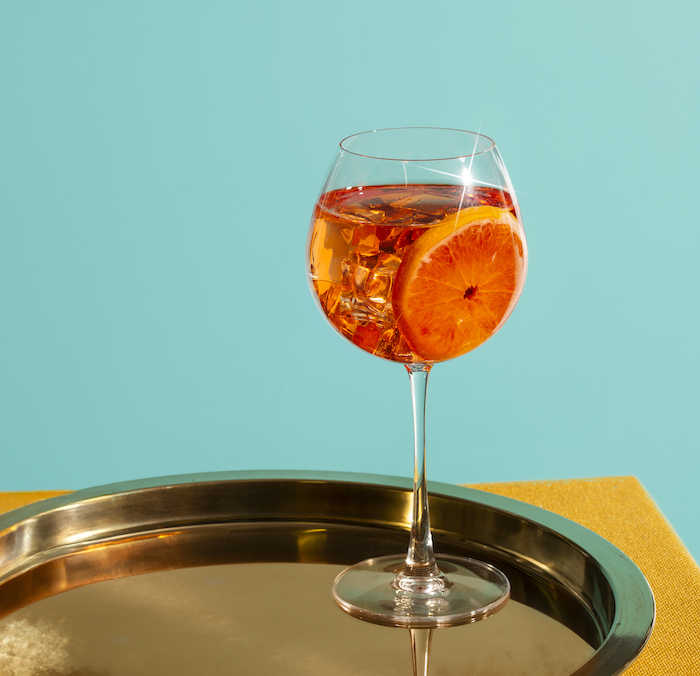
Synonymous with the Italian institution that is aperitivo hour, the distinctively-coloured Aperol Spritz has been enjoying more than a moment over the past decade or so. The perfect low-abv accompaniment to a light bite to eat as the sun sets, the Aperol Spritz couldn’t be more early-2000s if it tried, with moderation trends and a move towards lighter flavours and away from high-energy drinking occasions. The more generic Spritz came about in 1919 thanks to brothers Luigi and Silvio Barbieri and according to Aperol, its eponymous Spritz came in the 1950s. The official ratio, immortalised in advertising campaigns, is three parts prosecco, two parts Aperol and one part soda.
8 Paloma

While the rest of the world has been mixing tequila into Margaritas of varying quality, in Mexico – and Jalisco in particular – they have long favoured a simple long drink with grapefruit soda Squirt as the mixer. The Paloma, meaning ‘dove’ in Spanish, has been gaining ground further afield in recent years, increasingly finding itself on cocktail lists around the world. Most contemporary versions feature a squeeze of lime juice, with many adding salt, and there’s a growing number of premium grapefruit mixers to choose from. It’s not uncommon to find classier examples made with fresh grapefruit juice either.
7 Pornstar Martini

With its approachable, fruity flavour profile and distinctive appearance – not least the shot of fizz served alongside – the Pornstar has always had both the looks and the personality to become one of the most successful and mainstream of modern-day classics. Indeed, as its creator the late Douglas Ankrah, once wrote, the first time he made these, in 2002, the whole bar was ordering them by the end of the night. The bar in question was Ankrah’s Townhouse in London’s Knightsbridge, but his other venue, Soho’s LAB, often gets the credit. Today you can get one pretty much anywhere.
6 Daiquiri

The very essence of simplicity, and a study in perfect balance, the Daiquiri elevates its three humble ingredients into something far greater than their sum. It also might be the most bastardised of cocktails, suffering one lurid, sickly-sweet transformation after the next, over the course of its long history. It has spawned its fair share of worthwhile variations too, at least – everything from the Hemingway Daiquiri of Havana’s El Floridita, to Gregor De Gruyther’s Nuclear Daiquiri. Meanwhile, the original – simply combining rum, lime and sugar – endures. Origin stories abound, with a number featuring American engineer Jennings Stockton Cox, stationed near the village of Daiquiri in Cuba from the late 1800s. More than likely, the combination of rum, lime and sugar predated him.
5 Dry Martini

Enduringly elegant and sophisticated, and a masterclass in minimalism, the Dry Martini is many things, but a cocktail with a neat origin story it is not. What people once knew as a Martini, or a Martinez or Martine, was a far cry from the Dry Martini of today, made with Old Tom gin, sweet vermouth and bitters. Some give credit, at least for the name, to New York resident Franklin Martine, who was mixing these ingredients together in the late 1800s. It took some time for dry vermouth to enter the picture, and dry gin too, evolving the drink into something more closely resembling what we know today. That evolution continued, sometimes too far, such as the Anything Martinis of the ’80s. But the timeless Dry Martini remains, with a range of gin-to-vermouth ratios in use, all simply garnished with an olive or lemon twist.
4 Espresso Martini

Equal parts functional and flavourful, this caffeinated classic has been on the rise in recent years. It was at some point in the ’80s, at the Soho Brasserie on Old Compton Street in London, that legendary bartender Dick Bradsell received a request from a young woman for “something that’s gonna wake me up, then fuck me up”. The resulting Vodka Espresso had all the ingredients of today’s version – vodka, sugar syrup, coffee liqueur and espresso – but was served on the rocks. Later, when Bradsell was working at Match on Clerkenwell Road, the drink evolved into the Espresso Martini, complete with three coffee beans as garnish. At times going by the name Pharmaceutical Stimulant, this is the version that continues to perform its original function for drinkers today, but it wasn’t until a few years ago that it really took off, no doubt benefiting from coffee’s recent rise in popularity.
3 Negroni
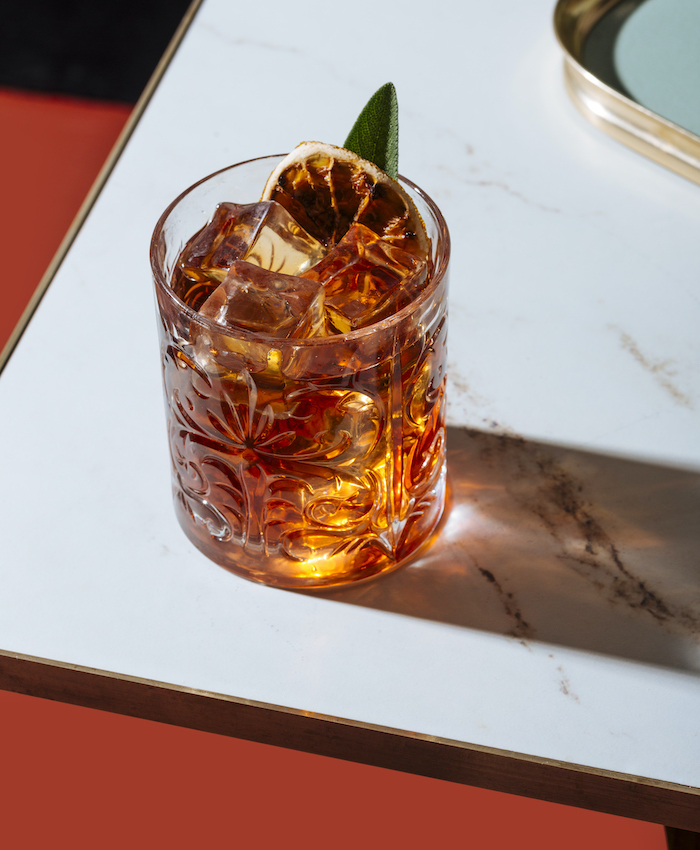
This quintessentially Italian aperitivo has become ubiquitous in recent times, and justifiably so. The Negroni is punchy and complex, yet bright and lifted, with a gorgeous colour. And it’s difficult to make badly, thanks to an easy, equal-parts ratio of gin, sweet vermouth and Campari. A word on the cocktail genealogy here. First to the Milano-Torino, a deceptively simple combination of Campari and sweet vermouth. The addition of soda water made it more palatable to American tourists, likely giving us the Americano. The Count Negroni followed. As the story goes, the Count moseyed up to the bar at the Caffè Casoni somewhere around the year 1919 and instructed bartender Fosco Scarselli to spruce up his drink with some gin. Scarselli is said to have added a twist of his own, replacing the customary lemon garnish with orange, and a legend was born. But that’s not where the family tree ends, of course. There’s the recently TikTok-famous Negroni Sbagliato, for example, created in the 1970s through yet another ingredient swap. And of course various cross-category spins.
2 Old Fashioned
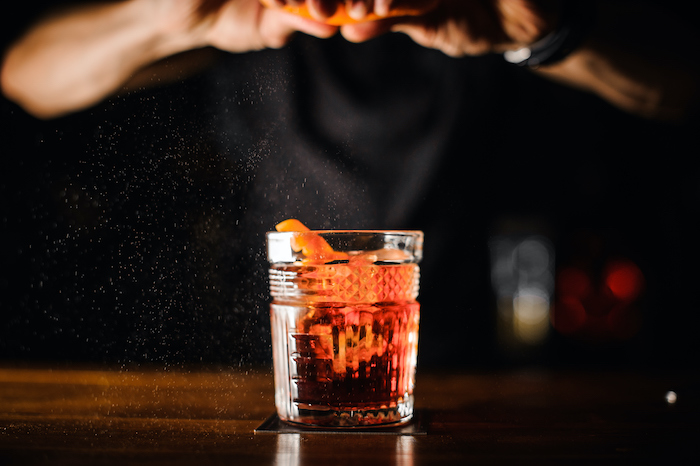
The Old Fashioned recalls a simpler time of no-nonsense, spirit-forward cocktail drinking. The essence of the earliest definition of the word ‘cocktail’ – comprising spirit, sugar, water and bitters – this classic emerged in the mid-to-late 1800s in opposition to new-fangled cocktail additions such as maraschino or absinthe. “Gimme an old-fashioned Whiskey Cocktail,” a patron would say, curbing the enthusiasm of an eager barkeep. For all its simplicity, there’s no shortage of nuance and customisation here – indeed, most recently we’ve seen the rise of the New Fashioned. There’s the spirit, of course, with bourbon and rye at the forefront, but variations using other aged spirits too. Sugar comes in syrup or cube form, with demerara and the like to choose from, and there’s a vast array of bitters to incorporate, singly or in combination. Then there’s the garnish, mercifully limited to orange or lemon zest nowadays.
1 Margarita

Nothing says good times quite like tequila’s flagship cocktail, the Margarita. Its most classic incarnation, in which tequila is shaken with lime juice and orange liqueur, likely has its origins in the pre-Prohibition drink the Daisy. More of a template than a specific cocktail, the Daisy combined a spirit with lime juice and either orange liqueur or grenadine. The tequila version eventually came to be known by the Spanish word for daisy, and it went on to conquer the globe. The Margarita has endured countless takes and variations in its time, many of them ignoble, to say the least, and the less said of those the better. But one version that unquestionably elevates the original is the Tommy’s Margarita, created by Julio Bermejo of Tommy’s Mexican Restaurant in San Francisco. His version, which replaces the orange liqueur with agave syrup, puts tequila centre stage, where it belongs.


